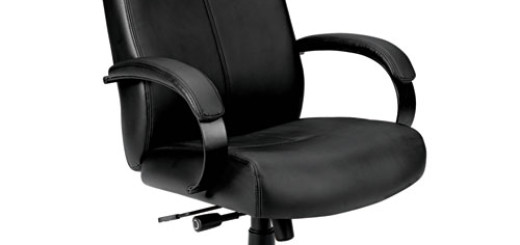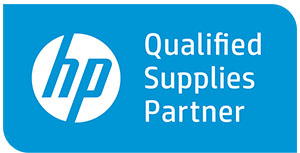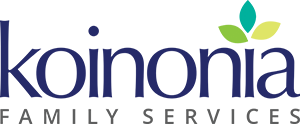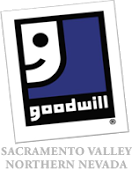As Long As The Work Gets Done: Make the Work Environment Not Suck
 by Liz Sumner
by Liz Sumner
Imagine a world where everyone does what he or she wants to do. Wouldn’t that be a great work environment? It’s not a fantasy world. It’s called a Results-Only Work Environment, and it exists now in organizations all over the globe.
I first learned about ROWE in Daniel Pink’s, Drive: The Surprising Truth About What Motivates Us. Pink describes compelling evidence that with everything other than routine tasks, extrinsic rewards don’t work. Carrots and sticks actually make people less productive and satisfied.
What does work is intrinsic motivation, specifically autonomy over time, task, and team; Mastery — becoming better at something that truly matters; and purpose — doing work in service of the greater good.
Why Work Sucks and How to Fix It
To illustrate the concept of autonomy, Pink tells about the Results-Only Work Environment, a revolutionary system created by Cali Ressler and Jody Thompson and described in their book, Why Work Sucks and How to Fix It.
Time + Physical Presence ? Results
The authors explain that we labor under a myth that Time + Physical Presence = Results. Some additional shared beliefs and unwritten rules of the workplace include:
- Most work happens from Monday-Friday 8-5.
- People at their workstations are doing work.
- Results are proportional to efforts.
- People who work lots of hours get more work done than those who work fewer hours.
These assumptions are pervasive yet they make no sense in today’s knowledge workplace. Time is not an effective measure of value, and it distorts behavior. We call in sick to take care of personal business. We look busy to make it to 5 o’clock or put in extra hours to substitute for not being able to accomplish a certain task.
“Another work environment improvement may include a furnishings upgrade. Please check Burkett’s vast inventory or contact us for a consultation.“
Instead, in a ROWE, workers are free to do whatever they want, whenever they want, as long as the work gets done. They are judged on results, not hours. Instead of asking, “is this person putting in her time?” you ask, “is this person (or am I) delivering or not?”
Changing an organization to a ROWE doesn’t happen overnight. On average it takes six months to unlearn the old and set up the new way of working. Ressler and Thompson call it the “Migration Process.” They offer “13 Guideposts” about time in a ROWE and ask employees to imagine life if the following were true:
- People at all levels stop doing any activity that is a waste of their time, the customer’s time, or the company’s time.
- Employees have the freedom to work any way they want.
- Every day feels like Saturday.
- People have an unlimited amount of paid time off as long as the work gets done.
- Work isn’t a place you go — it’s something you do.
- Arriving at the workplace at 2 pm is not considered coming in late. Leaving the workplace at 2 pm is not considered leaving early.
- Nobody talks about how many hours they work.
- Every meeting is optional.
- It’s okay to grocery shop on a Wednesday morning, catch a movie on a Tuesday afternoon, or take a nap on a Thursday afternoon.
- There are no work schedules.
- No one feels guilty, overworked, or stressed out.
- There aren’t any last-minute fire drills.
- There is no judgment about how you spend your time.
No judgment. Easier said than done.
Anyone who has ever worked in an office is familiar with the overt and covert negative feedback that gets flung when people judge one another. Ressler and Thompson call it “Sludge” and have identified multiple varieties. For example, “Sludge Anticipation,” where you prepare for Sludge that may or may not come, e.g., coming up with excuses when you’re running late, and “Sludge Justification” when you use those excuses. When people talk about others they call it “Back Sludge” or even a “Sludge Conspiracy.” All who participate in it, including ourselves, are accepting and reinforcing a workplace that values time and appearances over genuine accomplishment.
Major culture change is required, but Sludge can and must be eliminated. To do so you must redirect the focus back to the work. Ask yourself, “What needs to get done?” If someone makes a snide comment about how much time you’re putting in, you say sincerely and non-defensively, “Is there anything you need? Is there something I can help you with?”
It’s hard to judge people based on what doesn’t matter when you’re focusing on what does.
What Matters with ROWE
In a ROWE, managers need to provide crystal-clear expectations about what needs to get done daily, weekly, and monthly. What does “good” look like? How will check-ins work? It’s essential that everyone understand what’s needed and is held accountable.
I asked ROWE co-creator, Jody Thompson, how to define clearly what needs to be done.
We first help the individual understand why they are ultimately doing their job. We continue to push them past the activities that they do until they get to the point where they identify the reason they do all those things, or the ultimate outcome. It has to be an outcome that they can emotionally attach to, like “I keep people from sleeping on the street” or “I help people go places.”
Once they are attached to a higher outcome, they can then decide which are the things they do in their job that align with their ultimate outcome. Those are the activities, or tasks, that they should keep doing. For any activity that does not move them closer to their outcome, we encourage them to stop doing the activity.
Some examples of clearly described expectations and results:
Example 1: Expanding perceived hours of operation will help us make life fun and easy (outcome) for our customers (the consumer) by meeting them where they are. Therefore, on September 1, we make email support available 24/7 (result). We will track sales and customer-satisfaction metrics (measures), working with the Retail Support Team to further refine measures that target the success of this change for 90 days and then re-evaluate.
Example 2: Conquering the backlog of applications for ABC services will ensure the citizens of XYZ County (our customer) that require these services are living in a safe and healthy manner (outcome). Therefore, we are going to process applications wherever makes the most sense to get them completed at the time service is required (result). We will measure call volume, application process time, and window wait time (measures) to make sure we effectively and efficiently meet our outcome.
Thompson explains determination of workload:
First, everyone needs to be crystal clear on the outcome and subsequent results that need to be achieved. Then managers and employees need to have frequent discussions about whether the workload feels right. Today, organizations are not realizing the true capacity of each individual or team. When people are seeing work as Time + Physical Presence = Results, there is a lot of wasted effort, interruptions and other office culture behavior that is undermining capacity.
At some point, when the focus on Time + Physical Presence = Results doesn’t exist, and people are clear about outcomes/results, maximum capacity is achieved with current resources. It becomes obvious then if additional resources are required.
Origin of the Results-Only Work Environment
The Results-Only Work Environment grew out of an effort in 2001 to make Best Buy Corporate Headquarters an Employer of Choice. As part of this program a task force surveyed employees to find out what they most wanted from work. The overwhelming response was, “Trust me with my time. Trust me to do my job.”
Cali Ressler was on that committee and tasked with turning that insight into action. Just out of college, Cali hadn’t yet become inured to the absurdities of the average workplace — playing the game of looking busy and engaged. She helped create the Alternative Work Program, a pilot that gave people a choice from a predetermined set of flexible schedules. In 2003, Jody Thompson came on board, and the program was developed and refined. In 2008, when their book was published, approximately 3,000 corporate Best Buy employees were working in a ROWE with increases in productivity averaging 35 percent and decreases in voluntary turnover rates as much as 90 percent in some divisions.
Final Thoughts
The book, Why Work Sucks and How to Fix It, suggests how to begin the conversation about transforming the workplace and answers to common, “Yeah, but” questions like, “Won’t everyone take advantage and slack off?” and “What if everyone decides not to work at the same time?”
The website GoRowe.com gives further resources, and its news archive can point you to organizations that are implementing these techniques.
Questions about some of the terminology used in this article? Get more information (definitions and links) on key college, career, and job-search terms by going to our Job-Seeker’s Glossary of Job-Hunting Terms.
 Change-management consultant Liz Sumner Liz Sumner is a change-management consultant who helps organizations empower their employees to reap the productivity benefits of a collaborative workplace. In her blog at E2Culture.com, she discusses issues of social b usiness/Enterprise 2.0 from the employee/user point of view.
Change-management consultant Liz Sumner Liz Sumner is a change-management consultant who helps organizations empower their employees to reap the productivity benefits of a collaborative workplace. In her blog at E2Culture.com, she discusses issues of social b usiness/Enterprise 2.0 from the employee/user point of view.












